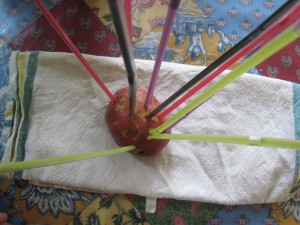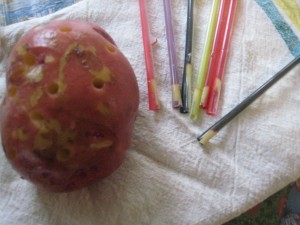Tag: tornado’
Tornadoes, Lice and Muse
- by KitchenPantryScientist
Tomorrow, we’re heading out to see Tornado Alley at the Science Museum of Minnesota‘s omintheater. We’ll get to check out the TIV (Tornado Intercept Vehicle) and meet film maker and storm chaser Sean Casey while we’re there. You can meet him too from 12-2 on Sat. Sept.29 and Sun. Sept.30. I’m pretty sure we’ll be blown away.
My microbiology class just had a great field trip to the Minnesota Lice Lady. We looked at nits and lice through a microscope, learned about the parasite’s life cycle and heard that braids or a ponytail can keep your friends’ bugs from crawling over to your head. I’ll be posting soon about these little monsters!
Cricket magazine has been around for a long time, but I just discovered a kids’ science imprint called Muse magazine, for kids from 9-14, which I’ll be getting for every kid on my list this year! I have no affiliation with the magazine, but learned about it as the result of a science online meeting I’ll attend later this year. I’m co-moderating a session with Elizabeth Preston, who is the magazine’s editor and writes a great adult science blog called Inkfish.
Straw Stuck in a Barn Experiment- Science Camp Day 1
- by KitchenPantryScientist
It’s been a stormy summer in Minnesota, and we’ve seen more than our fair share of tornadoes. As a kid, I was always fascinated by stories of pieces of straw from a field being driven into wooden planks in barns and houses by the swirling winds.
With a potato, plastic drinking straws and a glass of water, we were able to see for ourselves how this could happen. Like drinking straws, real straw is hollow and although a potato is much softer than a piece of wood, we got the picture. I was skeptical about the experiment, but it worked!
Just soak a potato in a glass of water for about 30 minutes. We used a red, boiling potato, because that’s what I had on hand.
Then, grasp a straw tightly, near the middle and stab it into the potato. We were surprised to find that, instead of breaking or bending, the straw can be driven quite a way into the potato. This happens because objects in motion, like the straw, tend to stay in motion and objects at rest, like the potato, tend to stay at rest. This is known as inertia. In addition, the thin edges of a drinking straw don’t offer much resistance.
Try it!


